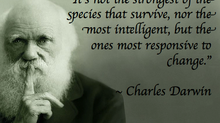Changes in an organism's habitat and Speciation
- ruby
- 2016년 1월 6일
- 2분 분량

When some members of a sexually reproducing population change a lot that they are no longer able to produce viable, fertile offspring with members of the original population, speciation has occurred. Speciation is the formation of new species from existing species.
Two types of Isolating Mechanisms: Pre-zygotic & Post-zygotic
Pre-zygotic isolating mechanism means a barrier that either hinders species from mating or prevents fertilization of the eggs if individuals from different species try to mate.

Behavioural isolating mechanisms:
any particular signals or behaviours that are species specific prevent interbreeding with closely related species. For example, the western meadowlark and the eastern meadowlark have similar appearance. However, very little interspecies mating takes place because of the differences in their songs.

Habitat isolating mechanisms:
even if two species live in the same general region, they may encounter each other rarely due to different habitats. For example, two common garter snake live in the same area. One of them prefers open areas such as meadows and rarely enters water. On the other hand, another one is commonly found near water.
Post-zygotic isolating mechanisms is a barrier that prevents hybrid zygotes from developing into viable, fertile individuals.

Hybrid inviability: hybrid embryos between sheep and goats die in early development before birth. This usually happens due to genetic incompatibility, which prevents normal mitosis after fusion of the nuclei in the gametes.

Hybrid sterility: two species sometimes can mate and produce hybrid offspring. For example, a mule is the offspring of a horse and a donkey. However, a reproductive barrier still exists between them if the hybrid offspring is sterile.
Allopatric speciation- Speciation in which a population is seperated into two or more isolated groups due to a geographical barriers. Its example is Darwin's Finches.

The common ancestor initially gave rise to several groups of finches. Over time, populations within each group specialized to use the resources in their particular island habitats, and some of these populations eventually diverged to form species with distinctive lifestyles. Thus, the populations within different groups became geographically and reproductively isolated form one another.





















Comments